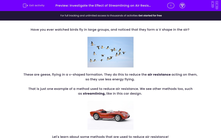Have you ever watched birds fly in large groups, and noticed that they form a V shape in the air?
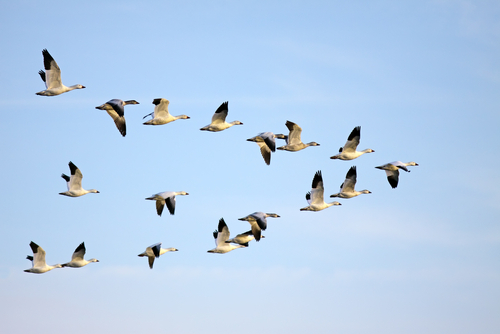
These are geese, flying in a v-shaped formation. They do this to reduce the air resistance acting on them, so they use less energy flying.
That is just one example of a method used to reduce air resistance. We see other methods too, such as streamlining, like in this car design.
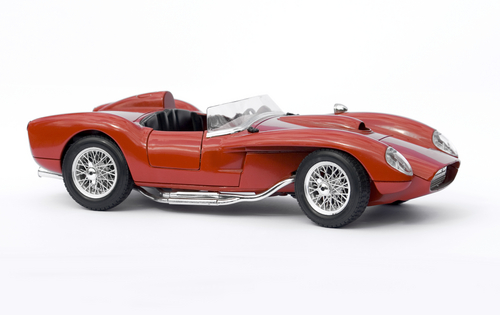
Let's learn about some methods that are used to reduce air resistance!
As a reminder, air resistance is a force that opposes the motion of a moving object through air. It happens as a result of the fact that the moving object has to push past air particles to move, and that causes a frictional force acting in the opposite direction.
Sometimes, air resistance can be useful, for example, in parachutes. The parachute can provide air resistance to slow down a skydiver, allowing them to land safely on the ground.
However, often, air resistance is unhelpful. Just like other forms of friction, air resistance can make it more difficult for objects to move, or make that object have to exert more energy to travel.
A good example is vehicles travelling along roads. As vehicles travel forwards, they experience air resistance, acting against their direction of movement.
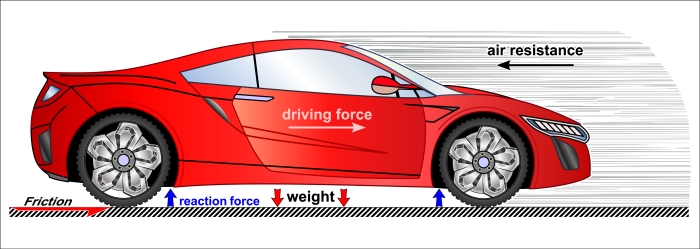
Overcoming the force of air resistance means that the car has to increase its forward driving force to compensate. Over time, this requires more energy and fuel.
Many cars are designed to be streamlined, to reduce the force of air resistance.
A streamlined shape is a shape that travels through air (and water) more easily, causing less air resistance. Streamlined shapes tend to have small curves, and are often low to the ground, like this sports car.

Streamlined shapes are also often more 'pointed' towards the front. The air would flow over this sports car much more easily than a moving truck, for example.
Another great example of streamlining is in professional cycling. If you look at the image below, you can see a professional cyclist. She has a streamlined helmet, and she holds her body low to the bike. These factors reduce the air resistance acting on her. What this means in practice is that she can move at greater speeds, compared to if she were sitting up straight, for example.
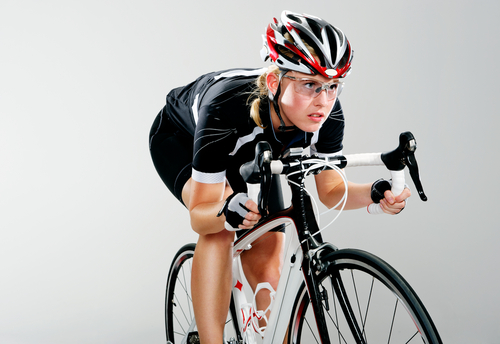
What about our example of the v-shaped flying geese from earlier?

As the geese fly, they experience air resistance. This means that they have to use more energy to overcome that air resistance. When flying in this formation, each goose (except the first) is flying partially behind another. This reduces the air resistance experienced by those geese, allowing them to conserve energy.
This concept has been applied to driving too. If a lorry follows behind another lorry, it experiences less air resistance. It doesn't need to use as much forward driving force to maintain its speed, energy is saved, and less fuel is needed.
Now let's apply what we have learnt to some questions!

